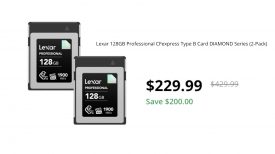
Sony recently updated its X-OCN White Paper to V1.1 to coincide with the launch of the new BURANO digital cinema camera. I have combed through it to pull out the most relevant information and how it relates to the upcoming BURANO.
Way back in 2016, Sony released its new recording format called X-OCN (eXtended tonal range Original Camera Negative) which is their answer to a compressed RAW format. I am only speculating here, but I imagine that they came to some sort of licensing agreement with RED to be able to use X-OCN in their cameras.

X-OCN was developed to enhance the compression efficiency of Sony RAW to deliver visually loss-less image quality utilizing 16 bits. It does this by processing the camera’s original image data utilizing a unique algorithm that was developed by Sony. By utilizing this algorithm Sony could produce file sizes that were much smaller than typical camera RAW, but with 16-bit scene linear encoding. X-OCN utilizes CBR (Constant Bit Rate) encoding, where the output remains constant regardless of the complexity of the image. This contributes to minimizing risks of any distortion or artifacts in the image, that may be caused by a limitation of conventional encoding
16-bit X-OCN records 65,536 tonal gradations per color component or over 280 trillion individual shades of color. What you need to keep in mind, is that while having all of these shades of colors is great, monitors are not able to display that much color information,
According to Sony, the key features of X-OCN are:
• Exceptional quality with the power of 16 bits
• Smaller files, Longer recording times
• Greater decision-making flexibility in post-production
• Stable image quality with robust encoding
• Easy to work with full third-party support
X-OCN doesn’t “bake in” your settings for Exposure Index, color space, LUTs, gamma, Log, and others, as it only captures these parameters as monitoring settings.

X-OCN uses the same industry-standard OP1a MXF wrapper as Sony RAW, XAVC, SR, and MPEG2 formats. Picture, Sound and Metadata are contained within one file wrapper. X-OCN also adopts a wavelet transform as part of the image compression that allows it to offer great flexibility in viewing performance. You can still playback X- OCN clips smoothly in real-time by selecting 1/2 or 1/4 resolution (or even less if supported) on application software.

X-OCN is available in three different flavors. The new BURANO is only able to record in X-OCN LT, while its bihh¥gger brother, the VENICE 2, can capture in X-OCN XT and X-OCN ST as well.

Above you can see how the bitrate of X-OCN compares to other formats at 4K/24p and 8K/24p.

In the case of the BURANO, 4K X-OCN LT (389Mbps) can offer RAW quality with 16-bit scene linear at almost equivalent bitrate to 4K XAVC Class480 (384Mbps) and even at a lower bitrate than 4K ProRes 422 (503Mbps).
Just like the VENICE 2, the BURANO doesn’t require the use of the AXS-R7 external recorder to be able to record X-OCN files. This is now all done internally to the camera’s dual CFexpress Type B card slots.
Now, as I mentioned earlier, you don’t get all of the X-OCN recording options as you do with the VENICE 2. The BURANO is only capable of recording X-OCN LT, you cannot record in X-OCN XT or X-OCN ST. It will be interesting to see if the BURANO eventually gets the ability to record X-OCN XT or ST.
Sony states that X-OCN LT is ideal when you need even smaller file sizes. These files are 60% smaller than Sony RAW yet still give you the picture quality and image processing flexibility provided by a 16-bit Linear file.
The BURANO is capable of recording 8192 x 430 17:9 or 7680 x 4320 16:9 in X-OCN LT at up to 29.97p.

The BURANO doesn’t use AXS memory cards like the VENICE 2. Instead, it has dual CFExpress Type B card slots. This makes sense given its recording capabilities and codecs and the fact that it is being squarely targeted as owner operators.

CFexpress Type B cards are fast enough to record the data rates required for the X-OCN LT files. However, you do need to use VPG400-certified cards to do so. The max. bitrate the camera can record is 270MB/s (8K 16:9 @30fps X-OCN LT. You don’t have to use VPG400-certified cards if you are recording in XAVC H or XAVC.
Sony is also releasing its own VPG400-certified CFexpress Type B cards in 1TB and 2TB capacities. I would imagine that any of the new CFexpress Type B 4.0 cards would be compatible with the BURANO as they massively exceed the minimum data requirements for capturing 8K X-OCN LT
Now, I don’t believe that you can dual-record X-OCN LT files to two cards at once. You can only use one, but you can record proxies to the other. I do believe that you can record XAVC H and regular XAVC to two cards simultaneously.
I am glad that Sony chose to go with CFexpress Type B cards, as a single Sony 1TB AXS S66 Memory Card costs a whopping $4,000.99 USD. Those cards are primarily expensive because they have a maximum write speed of up to 6.6 Gb/s.






